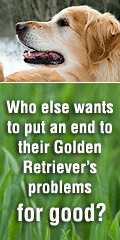When you start thinking about training your dog, you have to consider dog training essentials that will range from your emotional preparedness to the helpful equipments you need. Sample of dog training essentials can be collars, leashes, and books to DVDs, and the like. Moreover, remember that dog training essentials varies for specific types of dog training.
Keep in mind that the more complex the behaviors you are trying to elicit, the more training essentials will be required from you. And if you are considering training your dog to do agility competitions, you will need training essentials that has actual obstacle course items. It will also be best if you can provide him with a suitable training ground where he can do fitness exercises and also to help build its confidence on executing his learned skills in the area. These can aid him exercise on getting and keeping in focus on the given goal, and even memorize courses that they may tackle on the main competition. Also, if you’re just into basic obedience training lessons, you may need to stick with simple dog training essentials like a leash or a clicker.
Most obedience training will require dog training essentials like a choke collar, a lead, and possibly a clicker. As training essentials proceeds, some owners and trainers are hesitant to use a choke collar, but if used quickly and just for improvement , they can be useful in obedience training! Please bear in mind that the use of the choke collar must only be viewed as a tool to help you teach and not for any other purpose. Usage of training collar reinforces your dog to become responsive to you instead of its surroundings, and this can only be achieved when you commit to handling your dog on a slack leash. And you can definitely find nylon choke collars that are gentler than chain collars.
A good leash is also one more dependable piece for obedience training, because it lets you have more control over your pet. Some obedience classes offer a choke collar-lead that is an all-in-one piece used only for training purposes. But the main thing about choosing the right leash is to prefer one that matches the strength of your dog.
And as for clickers, it can only be a useful item if you are going to be doing clicker training. Note that there are pros and cons to this kind of training, but it can be an effective method for teaching your dog.
If you favor training your dog only for working purposes, you will need other essentials of dog trainings. For example , hunters that train dogs to retrieve game may need to purchase training essentials that can simulate useful game scenarios. Producing a hunting dog, one that will perform the tasks of retrieving game, is not a simple matter. It will take specialized equipments to achieve desired results such as dog whistles, or some of the more elaborate whistles come with built-in megaphones that allow the sound to be heard more easily and direct the blaring sound away from the hunter(s). But above all, we still suggest that the best way to train your hunting dog is learn from the experts.
If you are working with your dog on behavioral issues, advice varies on training essentials too. With chewing, training essentials are deterrent sprays and active toys. If there is aggression, training essentials may include treats for praise or recording for sound. Always consider that all training essentials required to deter behaviors are going to be directly connected to the behavior you are trying to get rid of.
Conversely , if you are really lost on how to train your dog, a trainer would be a great idea. So, if you don’t have enough time but with money to spend, a trainer is the best asset you can afford! As the saying goes, “Leave them to the experts!”


